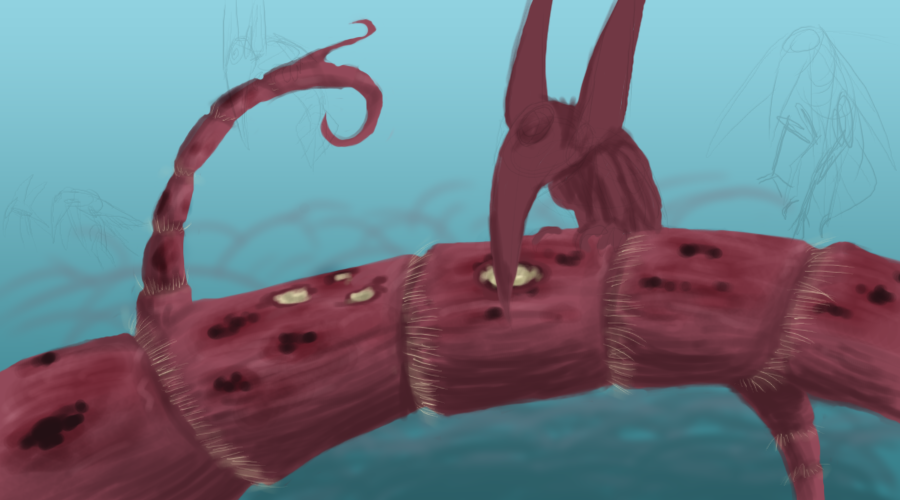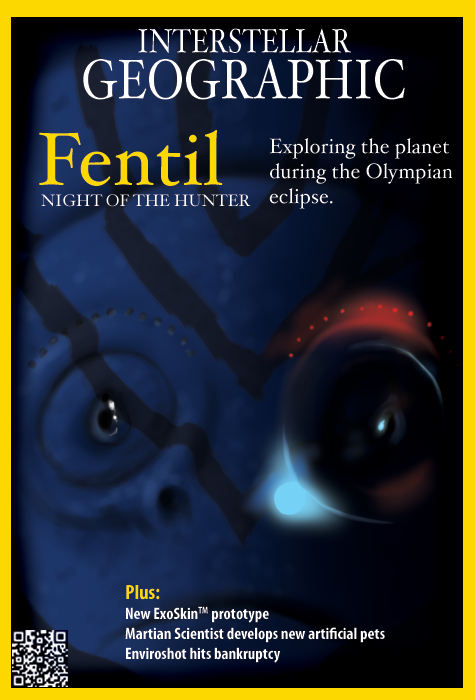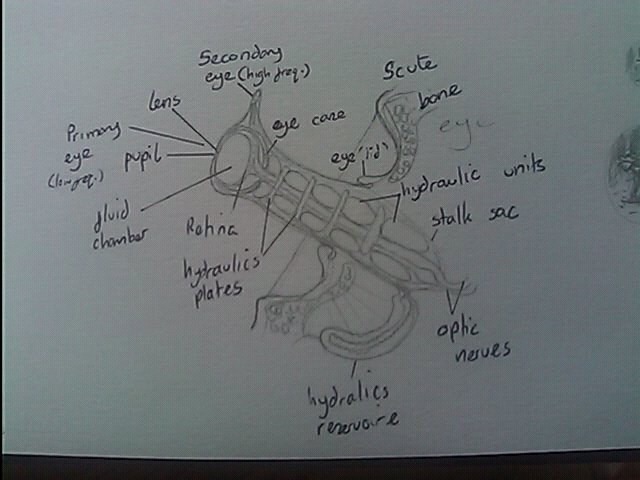Here's some pictures of my face.
Messing with symmetry:

The modeling begins:

It looks like one of those happy/sad theatre masks.
I used the reference photos taken by Toby Weller for my Dead Space photo shoot, as they are all high quality and perfect (and taken for the very purpose) for modeling my face.
I'm making myself get better at photoshop. I'm too used to making art in flash, which I can make pretty flexible to suit needs, but now that I'm trying to make some realistic textures, plus just generally more realistic pictures, such as Fentil animal paintings, I need to get my 'shop on.
Here's a work in progress of a Fentil underwater scene, featuring some marine creatures called 'keelfish'.

Keelfish at their simplest aesthetic description are lobster birds; Two winged, swimming creatures with an articulated exoskeleton. Their heavy armour means that they cannot swim indefinitely like Earth fish, and so must rest and roost in these winding ocean forests.
Another Fentil piece (paint sketch, not the final); here's a parody of sorts of National Geographic, but instead portraying a Fentil creature; a luminopticate.

I used the deep, hard-edged shadow to show the luminopticate's bio-luminescent photophores, which it uses to hunt in darkness. The red ones illuminate the pathway, whereas the blue ones are flashed in short bursts to blind and stun prey. This brilliant flare is often accompanied by a piercing shriek and is known as the 'flash-bang' hunting strategy.
The 'Olympian eclipse' is the regular event where Fentil passes behind its parent planet, Olympus. Because Fentil is a small moon of this much larger planet, going behind it can result in many days of perpetual darkness. Most plants have sophisticated mechanisms to cope with this dark period. Some creatures on the planet only come out of hibernation during these eclipses.
The eyes of these creatures are like a combination of snail and fish eyes:
Here's a diagram of a luminopticate eye.

The individual eye has two parts, the main eye and secondary eye and are both housed on the end of a hydraulic stalk, which can extend and retract. This stalk and its hydraulic system is housed in a moveable unit. This unit is connected to the bony ring. This unit can rotate to allow some freedom of movement without risking damage by exposing the eye stalks. I like the image of these eyes constantly independently twitching and looking around, like these fish:
I also love fish's mouths and how they articulate.
I found a good diagram on a very interesting blog I've been following.
On this blog, Gert van Dijk analyses various aspects of biology commonly applied to speculative evolution and mainstream creature design, which I find very useful. He is running his own speculative alien planet called 'Fuhara'.
Fish mouth:

Example of Fuharan life:

The 'marblebill'
"The marblebill is a large arboreal carnivore with some pronounced specializations. Its body shape reveals its mode of locomotion at a glance: it is a brachiator, swinging from its 'arms'. These, the first pair of limbs, are about three times as long as the others, and end in simple but powerful hooks. Suspended from these hooks the animal swings from branch to branch."
Quote from the Fuhara website
Not only do I like his designs, his painting skills are superb.
To finish,
I found old episodes of an animated show called 'The Trap Door'
I watched this when I was younger and I think I like it more now I can appreciate it for the animation. The animators put so much attention to detail in the secondary animation and background crawly things.
"Oh Globbits!"
END
No comments:
Post a Comment